Protecting Creativity: How Intellectual Property Shapes the Textile Design Industry
- Commercial Property
- 17th Oct 2024
Featuring Our Collaboration with Urban Eccentric In the vibrant world of fashion and textile design, creativity is at the heart of everything. Bold patterns, innovative fabrics and playful sock designs show the designer’s creativity and dedication. But with trends spreading faster than ever and copying all too common, how do businesses protect their creative assets? […]
By Amelia Denton
mlplaw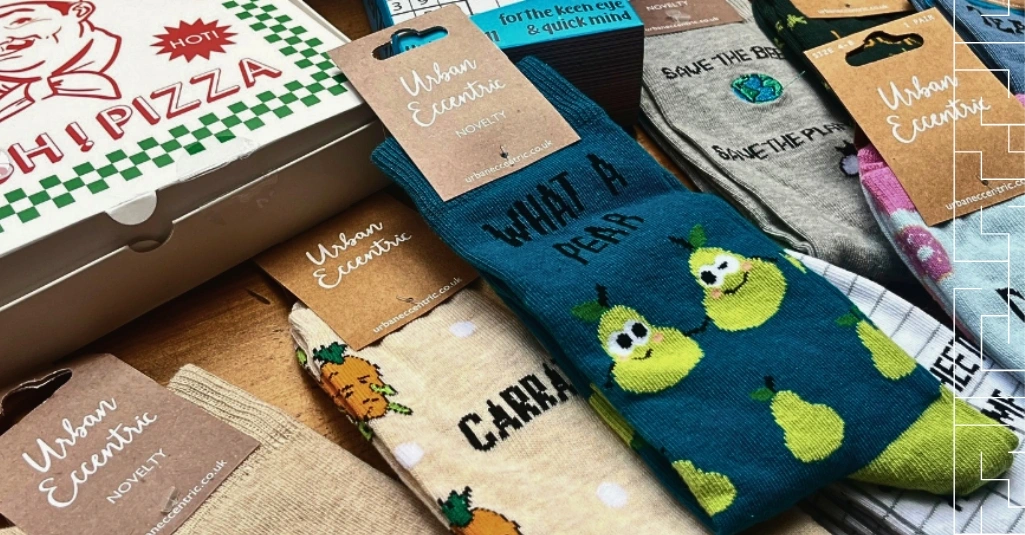
Featuring Our Collaboration with Urban Eccentric
In the vibrant world of fashion and textile design, creativity is at the heart of everything. Bold patterns, innovative fabrics and playful sock designs show the designer’s creativity and dedication. But with trends spreading faster than ever and copying all too common, how do businesses protect their creative assets?
In this blog, we’re diving into the role of intellectual property (IP) in the textile design industry. As part of our exciting collaboration with Urban Eccentric, we explore how small businesses can use IP. We show how to protect designs and thrive in a competitive market.
What is Intellectual Property in Textile Design and how can small business like Urban Eccentric leverage it?
Intellectual property is the legal protection for creations, including textile designs, inventions and artistic works. In the textile industry, these protections are crucial for preventing others from copying or stealing your designs. For small businesses like Urban Eccentric, protecting these designs is essential to their success. Here’s how they can leverage IP protections to safeguard their work:
- Trademarks: A trademark protects your brand’s identity – such as logos, names, or symbols that distinguish your products. For a company like Urban Eccentric, brand name and logo can be trademarked to prevent competitors from using similar branding. Securing a trademark for their logo and brand would ensure that no other company can cash in on their identity. Trademarks would also give Urban Eccentric the power to take legal action if another brand tries to imitate their branding.
- Copyright: Copyright protects original artistic works, including patterns or graphics used in textiles. Since Urban Eccentric’s sock designs often feature hand-drawn illustrations, copyright automatically protects these creative patterns from being reproduced without permission. While copyright is granted upon creation, registering these designs further strengthens their legal protections, making it easier to enforce their rights.
- Design Rights: If Urban Eccentric invents a new sock style or a unique feature, design rights can protect its appearance. These rights stop others from copying their innovative designs.
While each form of IP protection serves a different purpose, together, they create powerful legal safeguards against knock-offs and copycats. By strategically using IP protections, Urban Eccentric is not just safeguarding their socks. They’re building a brand story around creativity, quality and exclusivity, which is vital for standing out in a crowded market. Their unique designs, protected by IP laws, ensure they remain distinctive and offer long-term value for both their business and their loyal customers.
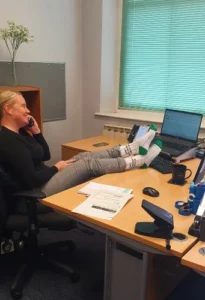
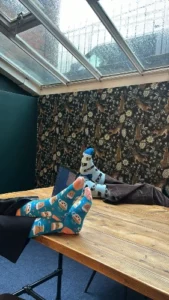
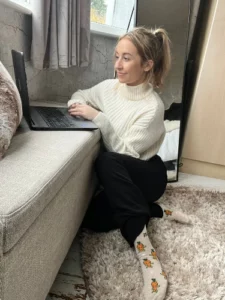
Challenges and Opportunities in Protecting Textile Designs
The fast-paced textile industry faces unique challenges when it comes to IP protection. Trends evolve quickly, making it hard for designers and businesses to keep up with copycats. For small businesses, navigating IP law can also seem overwhelming and costly.
However, IP offers enormous opportunities for textile designers to protect their creativity and grow their brands:
- Fast Fashion vs. Original Designers: Fast fashion is notorious for rapidly replicating designs from high-end and independent designers, often selling them at lower prices. With strong IP protections in place, designers can take legal action against those who copy their original work without permission.
- Trademarking Unique Patterns: For companies like Urban Eccentric, building a strong brand through trademarks is key to creating a loyal customer base. A distinctive logo or pattern ensures that when customers think of fun, high-quality socks, they think of Urban Eccentric—not an imitation.
- Protecting Creativity for the Long Term: Beyond defending against copycats, IP protections add significant value to a brand. As Urban Eccentric expands or seeks investors, their protected designs and brand identity will demonstrate their uniqueness and security, making them a more attractive business prospect.
Famous IP Cases in Fashion and Textiles
The fashion industry has seen some iconic legal battles over IP, highlighting just how critical it is to protect creative work. Here are two famous examples:
- Christian Louboutin’s Red Soles: One of the most famous IP battles in fashion involved Christian Louboutin, the luxury footwear designer known for his signature red soles. In 2012, Louboutin sought to trademark these soles, arguing they were a key part of his brand identity. This led to a legal dispute when Yves Saint Laurent (YSL) released monochrome shoes, including a pair with red soles. After a lengthy fight, Louboutin won the right to trademark the red sole, with courts ruling that even a single colour can be protected if used consistently as a brand element. This case set a major precedent, highlighting the importance of safeguarding distinctive brand features, like colour, to protect a brand’s uniqueness and market identity. For designers, it underscores the value of legally securing such elements early on.
- Burberry’s Check Pattern: Burberry’s distinctive beige, black, and red check, instantly recognisable worldwide, became a frequent target for counterfeiters and copycats seeking to replicate the design on products like scarves and handbags without permission. To safeguard its brand, Burberry aggressively enforced its IP rights, filing numerous lawsuits to stop unauthorised use of the pattern, seizing counterfeit goods, and seeking damages. This case underscores how design rights and trademarks are essential for maintaining a brand’s exclusivity and reputation. It also highlights the ongoing need for vigilance in protecting creative work from dilution and imitation.
The Louboutin and Burberry cases offer key lessons for fashion and textile businesses: brand identity extends beyond just a logo—elements like colours and patterns can be protected under intellectual property law. Copycats are common, and without IP protection, stopping imitators becomes difficult. Enforcement is equally crucial, as ongoing vigilance is needed to maintain exclusivity, as Burberry has demonstrated. Moreover, IP protection adds long-term value, strengthening brand identity and appeal to consumers and investors.
Conclusion: Why Protecting Textile Designs Matters
In the fast-moving world of fashion and textiles, protecting creative designs is more important than ever. Whether it’s an eye-catching sock pattern or a groundbreaking fabric innovation, intellectual property law provides the tools designers need to protect their work and build thriving businesses.
For small businesses like Urban Eccentric, understanding and leveraging IP rights can be a game-changer—not only does it guard against copycats, but it also adds long-term value to the brand.
At mlplaw, we’re proud to collaborate with creative businesses like Urban Eccentric and help them navigate the complexities of intellectual property law. If you’re a designer or small business owner wondering how to protect your creativity, reach out to us today—we’re here to help you every step of the way.
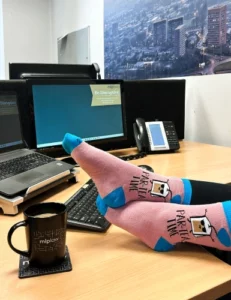
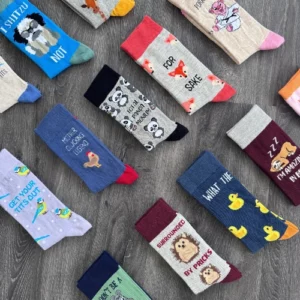
Want to Learn More About Protecting Your Designs?
Feel free to contact our team at mlplaw for a consultation! Read more on Intellectual Property page
About the expert

Amelia Denton
Solicitor - Commercial and IP
Amelia is a Solicitor in the Commercial and Intellectual Property team at mlplaw, having joined the firm in 2021 as a paralegal. During her training, she gained a broad range of legal experience, completing seats in Commercial and Intellectual Property, Corporate, Employment, and Litigation. This diverse background allows her to provide both contentious and non-contentious advice with a strong commercial focus.
Prior to joining mlplaw, Amelia worked in-house at a construction company and a tech start-up, developing a deep understanding of legal issues from a business perspective. In addition, she gained legal work experience in private practice at a national law firm and small to mid-sized regional firms, offering insight into various legal environments and client needs.
Amelia is committed to delivering pragmatic, commercially focused legal solutions that align with clients’ strategic business objectives.
Outside of work Amelia enjoys trying different restaurants, live music and comedy, country walks and spending time with family and friends.
Arrange an appointment
Let’s start by getting to know you and your business - either on the phone or in person. Complete the form below and we’ll be in touch shortly.

